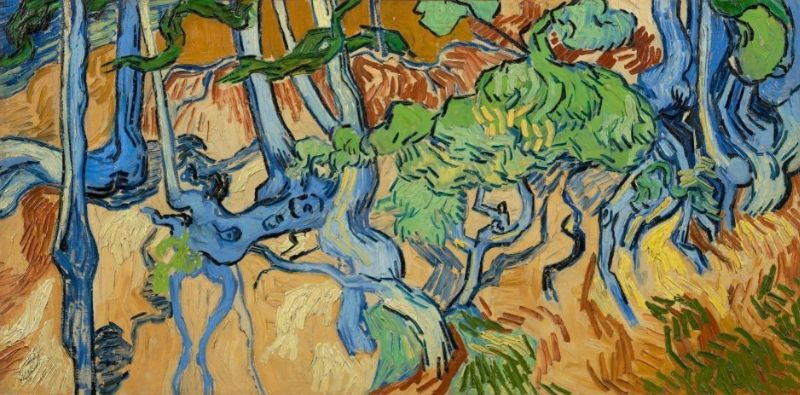[ad_1]
Vincent van Gogh has been the subject of several recent headlines: his painting The Parsonage Garden at Nuenen in Spring (1884) was stolen from the Singer Laren museum in the Netherlands in March, and a key self-portrait by the Dutch artist in the collection of the Nasjonalmuseet in Oslo was authenticated in January. Now, the van Gogh intrigue has deepened further, thanks to a researcher’s new claim that he has found the location where the artist created his last painting, Tree Roots (1890).
According to a report by the New York Times, Wouter van der Veen, scientific director of the Van Gogh Institute in France, has been researching details about the artist’s last day alive, which he says was spent at work on Tree Roots. Van der Veen claims that van Gogh created the painting on the Rue Daubigny in Auvers-sur-Oise, where the artist died on July 29, 1890. The researcher points to an abundance of tree roots, visible both in person and in archival images, on a nearby hill as part of the evidence for his theory about the work’s origins.
[Read about eight experts’ favorite artworks by van Gogh.]
Researchers at the Van Gogh Museum in Amsterdam support van der Veen’s finding, with Louis van Tilborgh, a senior researcher at the institution, telling the Times that the scientific director’s conclusion is “an interpretation, but it looks like indeed it is true.”
Van der Veen believes that van Gogh spent an entire day painting the tree roots because of the late afternoon light depicted in the work. “Ending his life with this painting makes so much sense,” van der Veen, who maintains his belief that the artist committed suicide, told the Times. “The painting illustrates the struggle of life, and a struggle with death.”
[ad_2]
Source link

